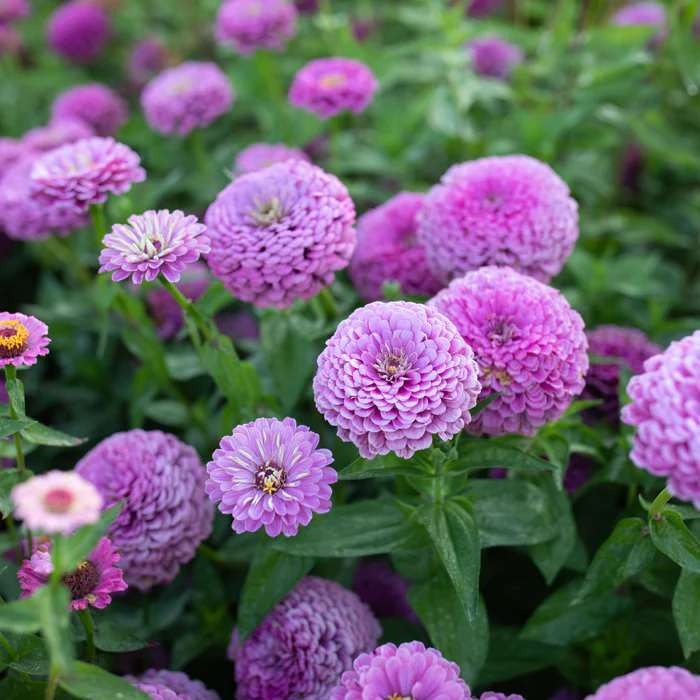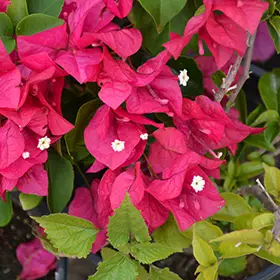I. Introduction to Phlox Plants
A. What are Phlox Plants?
Phlox plants are delightful and fragrant flowering perennials that belong to the Polemoniaceae family. They are native to North America and are known for their colorful, star-shaped blossoms and captivating fragrance.
B. The Fascinating History of Phlox Plants
The history of Phlox plants dates back to the early 18th century when they were first discovered by European botanists during their expeditions to America. Over time, these charming plants gained popularity among gardeners for their attractive blooms and versatility.
C. The Versatility and Popularity of Phlox in Gardens
Phlox plants have earned a special place in gardens due to their wide range of uses. From being perfect border plants to ornamental features in cottage gardens, they add beauty and charm to various landscapes.
II. Characteristics and Growth Requirements of Phlox Plants
A. Different Species and Varieties of Phlox
There are several species and varieties of Phlox, each with its unique characteristics and colors. Some popular varieties include Phlox paniculata, Phlox subulata, and Phlox drummondii.
B. Morphology and Features of Phlox Plants
- Leaf Structure and Shape: Phlox plants have simple, lance-shaped leaves that are arranged in an opposite pattern along the stems. The leaves provide an attractive backdrop for the vibrant flowers.
- Flower Structure and Color: The flowers of Phlox have five petals, forming a star-like shape. They come in a wide range of colors, including white, pink, purple, and more.
- Growth Habit and Height: The growth habit of Phlox can vary from creeping and mat-forming to tall and upright, depending on the species and variety. They can reach heights of up to 3 feet or more.
C. Optimal Growing Conditions for Phlox Plants
- Sunlight and Shade Preferences: Phlox plants thrive in full sunlight, but they can also tolerate light shade. Providing them with at least 6-8 hours of direct sunlight is essential for abundant blooms.
- Soil Type and pH Requirements: These plants prefer well-draining soil with a slightly acidic to neutral pH level. Loamy soil enriched with organic matter is ideal for their growth.
- Watering and Moisture Needs: Regular and consistent watering is crucial for the health of Phlox plants, especially during hot and dry periods. However, they are susceptible to root rot if the soil remains waterlogged.
- Temperature Tolerance: Phlox plants are hardy and can withstand cold temperatures. However, in regions with severe winters, providing a layer of mulch can protect the plants during the dormant season.
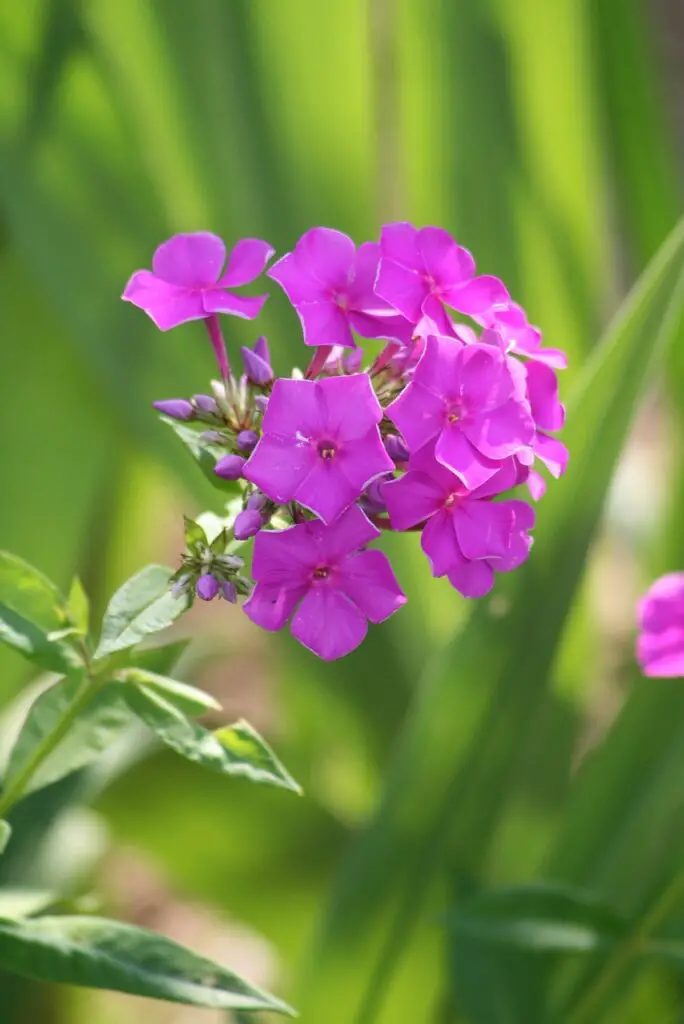
III. The Fragrance of Phlox Plants
A. Understanding the Aromatic Appeal
One of the most alluring features of Phlox plants is their enchanting fragrance. The sweet, pleasant scent of these flowers adds an extra sensory dimension to any garden or floral arrangement.
B. Chemical Compounds Responsible for the Fragrance
The captivating fragrance of Phlox flowers is attributed to various chemical compounds, including benzaldehyde, eugenol, and phenylacetaldehyde. These compounds create a unique and delightful aroma.
C. How Fragrance Varies Among Different Phlox Varieties
Different Phlox varieties have distinct fragrances, ranging from mild and sweet to intense and spicy. Gardeners can choose from a wide range of scents to create a captivating olfactory experience in their gardens.
D. Attracting Pollinators with Fragrant Phlox
The fragrant blooms of Phlox serve as natural magnets for pollinators like butterflies, bees, and hummingbirds. By planting Phlox in your garden, you can encourage these beneficial creatures to visit and aid in pollination.
IV. Exploring White Phlox Varieties
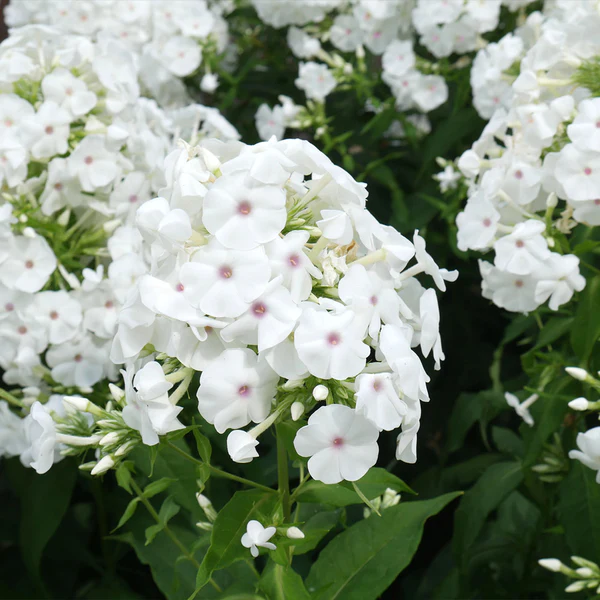
A. Snow White Elegance: Characteristics and Features
White Phlox varieties, like “Snowflake” and “David,” exude elegance and purity. Their snowy blossoms create a striking contrast against the green foliage, making them standout features in any landscape.
B. Best Practices for Cultivating White Phlox
To ensure the optimal growth of white Phlox, provide them with well-drained soil and adequate sunlight. Regular deadheading will promote continuous blooming throughout the season.
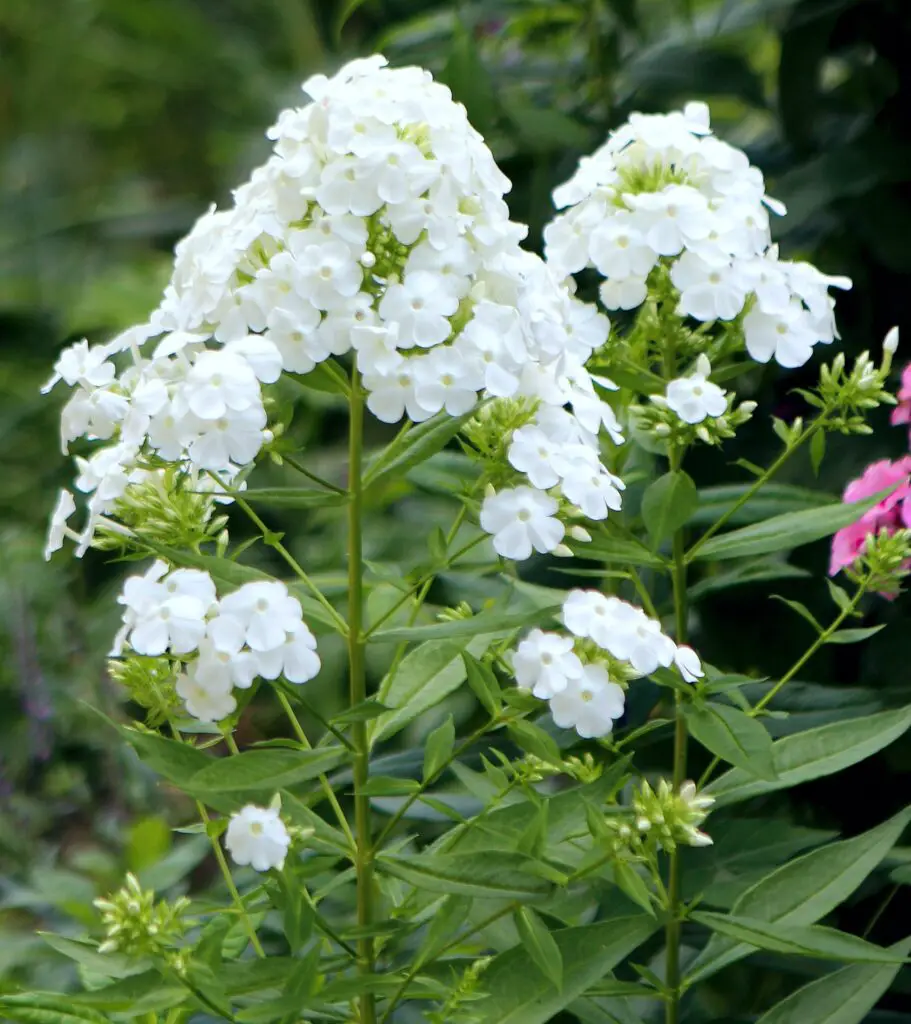
C. Designing Stunning Landscapes with White Phlox
White Phlox can be used in various garden design styles, such as cottage gardens, moon gardens, or contemporary landscapes. Their graceful appearance adds a touch of sophistication to any setting.
D. Frequently Asked Questions about White Phlox
- Q: Are white Phlox plants easy to grow for beginners?A: Yes, white Phlox plants are relatively easy to grow, making them a popular choice for novice gardeners.
- Q: Do white Phlox attract pollinators like other colorful varieties?A: Despite their lack of color, white Phlox still attract pollinators with their fragrance.
- Q: Can I use white Phlox as cut flowers for floral arrangements?A: Absolutely! White Phlox adds an elegant touch to floral bouquets and arrangements.
V. The Allure of Pink Phlox
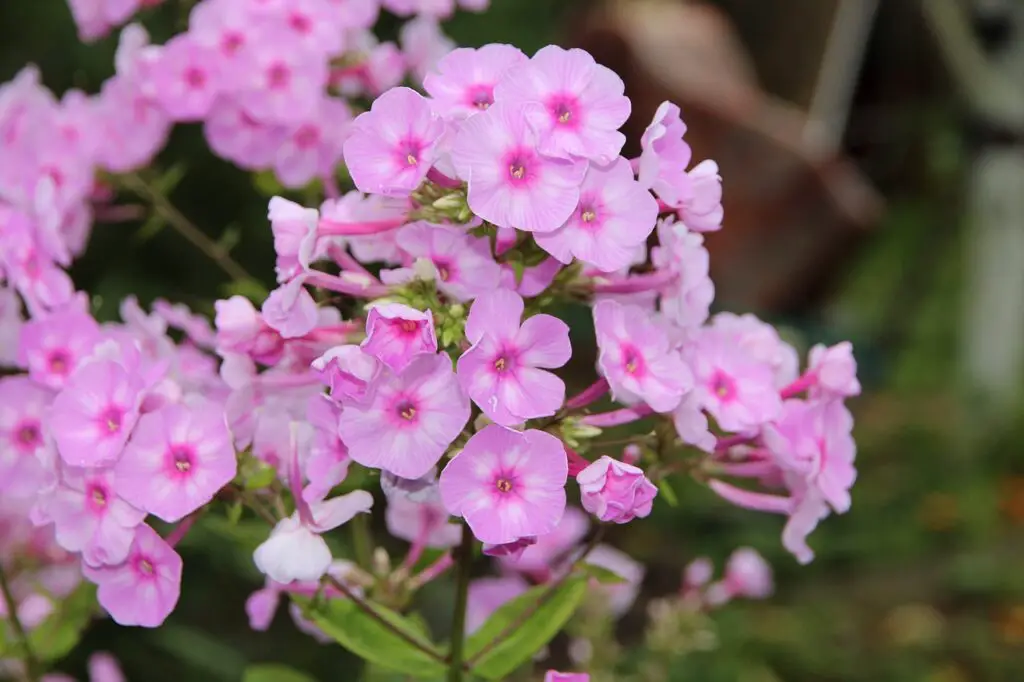
A. The Enchanting Beauty of Pink Phlox Varieties
Pink Phlox varieties, such as “Laura,” “Peppermint Twist,” and “Pink Flame,” boast a captivating range of pink hues. Their charming blooms are a symbol of grace and admiration in the garden.
B. Creating a Pink Paradise in Your Garden
To create a pink paradise in your garden, combine different shades of pink Phlox with complementary flowers like lavender, white, or blue. This harmonious blend will create a visually stunning and tranquil space.
More Fragrant Plant
C. Combining Pink Phlox with Other Flowers for a Harmonious Effect
Pink Phlox pairs exceptionally well with other flowers like roses, salvia, and coneflowers. The interplay of colors and shapes adds depth and interest to the overall garden design.
D. Frequently Asked Questions about Pink Phlox
- Q: Are pink Phlox plants high maintenance? A: Pink Phlox plants are relatively low maintenance and can thrive in various garden conditions.
- Q: How often should I water pink Phlox? A: Pink Phlox requires regular watering, especially during dry spells, to keep the soil consistently moist.
- Q: Can pink Phlox be grown in containers? A: Yes, pink Phlox can be grown in containers, but ensure the container has proper drainage.
VI. Embracing the Majesty of Purple Phlox
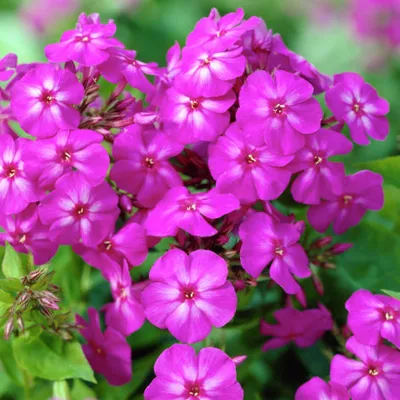
A. The Rich and Royal Tones of Purple Phlox Varieties
Purple Phlox, like “Violet Flame,” “Glamour Girl,” and “Purple Eye Flame,” exude a regal beauty with their deep and vibrant hues. They add a touch of majesty to any garden space.
B. Care and Maintenance Tips for Purple Phlox
Purple Phlox requires similar care to other varieties. Provide them with adequate sunlight, well-draining soil, and regular pruning to encourage bushier growth and more abundant blooms.
C. Pairing Purple Phlox with Complementary Plants
Purple Phlox can be beautifully paired with plants that have yellow or white blooms, creating a stunning contrast and enhancing the visual appeal of the garden.
D. Frequently Asked Questions about Purple Phlox
- Q: Do purple Phlox plants attract butterflies?A: Yes, purple Phlox plants are excellent attractors of butterflies and other pollinators.
- Q: Can I use purple Phlox as ground cover?A: Depending on the variety, purple Phlox can serve as beautiful ground cover, especially when planted in mass.
- Q: How long do purple Phlox blooms last?A: With proper care, purple Phlox can bloom from late spring through early fall, providing a long-lasting display of color.
Wax Jasmine Plant click for detail
VII. Tips for Growing and Maintaining Phlox Plants
A. Planting Phlox from Seeds or Transplants
Planting Phlox from seeds allows you to grow a variety of cultivars, while using transplants provides a quicker way to enjoy established plants. Follow specific planting instructions for each option.
B. Proper Pruning Techniques for Healthy Growth
Pruning helps maintain the shape and health of Phlox plants. Remove dead or diseased stems and spent flowers regularly to encourage continuous blooming.
C. Managing Pests and Diseases in Phlox
Keep an eye out for common pests like spider mites and aphids, and take appropriate measures, such as using neem oil or insecticidal soap, to keep them at bay. Good airflow and proper spacing can also prevent disease issues like powdery mildew.
D. Extending the Blooming Season through Deadheading
Deadheading spent flowers redirects the plant’s energy into producing new blooms, extending the overall blooming season and enhancing the garden’s visual appeal.
VIII. Propagation Methods for Phlox Plants
A. Growing Phlox from Cuttings
Propagation by stem cuttings is an effective way to reproduce desirable Phlox varieties. Select healthy stems and follow proper cutting and planting procedures for successful propagation.
B. Division Techniques for Propagation
Dividing mature Phlox plants allows you to create new plants from the existing clumps. Divide the plants in early spring or after the blooming season for the best results.
C. Seed Saving and Germination Process
Save seeds from your favorite Phlox plants to grow new ones in the future. Proper seed storage and germination techniques are crucial for successful propagation.
IX. Using Phlox Plants in Various Garden Designs
A. Creating a Cottage Garden with Phlox
Phlox plants are a classic addition to cottage gardens, where their charming blooms and delightful fragrance complement the informal and romantic atmosphere.
B. Incorporating Phlox in Formal Landscapes
Contrary to their wild appearance, Phlox plants can also be used in formal landscapes to create well-structured and visually appealing garden beds.
C. Using Phlox in Wildlife and Pollinator Gardens
Phlox’s attractiveness to pollinators and wildlife makes them an excellent addition to gardens designed to support local ecosystems and biodiversity.
X. Showcasing Phlox in Floral Arrangements
A. Harvesting Phlox Flowers at the Right Time
Harvest Phlox flowers when they are fully open but not overly mature to ensure they last longer in floral arrangements.
B. Design Tips for Floral Bouquets with Phlox
Create eye-catching floral bouquets by pairing Phlox with other complementary flowers and foliage, considering color, height, and texture.
C. Preserving the Freshness and Fragrance of Phlox
To preserve the freshness and fragrance of Phlox, change the water in the vase regularly and keep the bouquet in a cool location away from direct sunlight.
XI. Caring for Phlox Plants in Different Seasons
A. Springtime Care for Phlox
In spring, focus on promoting healthy growth by providing adequate water and removing weeds that may compete for nutrients.
B. Summer Maintenance and Watering
Summer care involves regular watering, mulching, and monitoring for pests and diseases.
C. Preparing Phlox for Fall and Winter
In fall, prepare Phlox for the dormant season by cutting back spent foliage and applying a layer of mulch for winter protection.
XII. Notable Phlox Plant Cultivars to Explore
A. Unique and Rare Phlox Varieties
Explore lesser-known Phlox cultivars to add a touch of novelty and intrigue to your garden.
B. Award-Winning Phlox Cultivars
Consider planting award-winning Phlox varieties, which have received recognition for their exceptional qualities.
C. Phlox Plants for Specific Climates and Regions
Choose Phlox varieties that are well-suited to your specific climate and growing conditions for the best results.
XIII. Combining Phlox with Other Garden Plants
A. Companion Planting Ideas with Phlox
Phlox’s versatility allows for beautiful and harmonious companion planting with a wide range of other garden plants.
B. Phlox as a Thrilling Thriller in Container Gardens
Use Phlox as a thriller plant in container gardens, where their height and vibrant blooms create an eye-catching focal point.
C. Enhancing Landscapes with Phlox and Perennials
Phlox combines wonderfully with various perennials to create dynamic and visually appealing garden landscapes.
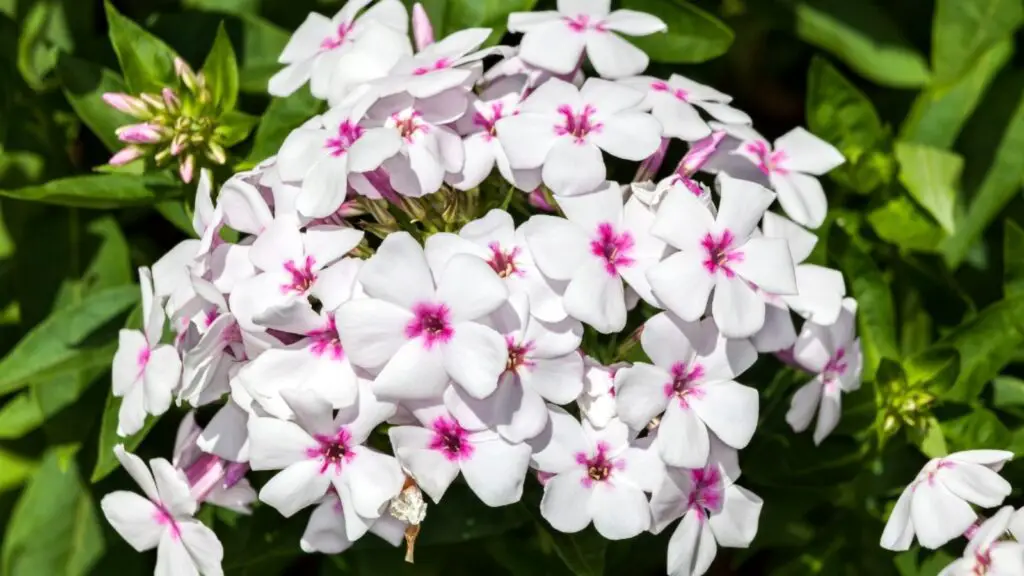
XIV. Tips for Overcoming Common Phlox Growing Challenges
A. Dealing with Powdery Mildew
Powdery mildew can affect Phlox plants, but early detection and proper treatment can prevent severe damage.
B. Managing Overcrowding and Spreading Issues
Regular division and thinning help manage overcrowding and maintain healthy Phlox stands.
C. Ensuring Proper Air Circulation for Healthy Plants
Good air circulation reduces the risk of fungal diseases and promotes healthier growth in Phlox.
XV. Inspiring Phlox Gardens Around the World
A. Visiting Stunning Phlox Displays and Festivals
Discover renowned gardens and annual events showcasing breathtaking displays of Phlox.
B. Famous Gardens Featuring Phlox Varieties
Explore famous gardens around the world that incorporate Phlox in their captivating landscapes.
XVI. The Cultural Significance of Phlox Plants
A. Phlox in Indigenous Folklore and Traditions
In some indigenous cultures, Phlox holds symbolic and medicinal significance, passed down through generations.
B. Phlox Symbolism and Meanings in Different Cultures
The symbolism and meanings attributed to Phlox vary among cultures, often representing beauty, harmony, or affection.
XVII. Environmental Benefits of Growing Phlox
A. Phlox as a Beneficial Native Plant
Native Phlox species play a vital role in supporting local ecosystems and biodiversity.
B. Phlox and Ecosystem Support for Wildlife
The nectar-rich flowers of Phlox attract various pollinators, contributing to ecosystem health.
XVIII. Harvesting and Using Phlox Seeds
A. Knowing When and How to Collect Seeds
Timing is crucial when harvesting Phlox seeds to ensure their viability for germination.
B. Storing Phlox Seeds for Future Planting
Proper storage conditions help maintain seed viability for future planting.
C. Germinating Phlox Seeds Successfully
Following specific germination techniques improves the success rate of growing Phlox from seeds.
XIX. Addressing Concerns about Phlox Invasiveness
A. Understanding Phlox as a Native or Non-Native Species
Differentiating between native and non-native Phlox species helps address concerns about invasiveness.
B. Controlling Phlox Spread in Natural Areas
Implementing appropriate management practices prevents Phlox from becoming invasive in natural settings.
XX. Conclusion
A. Recapitulation of the Beauty and Diversity of Phlox
Phlox plants offer an extraordinary array of colors, fragrances, and forms, making them a cherished addition to any garden.
B. Final Thoughts and Encouragement for Phlox Enthusiasts
As you embark on your Phlox gardening journey, embrace the joy and creativity that these lovely plants bring to your outdoor spaces.

